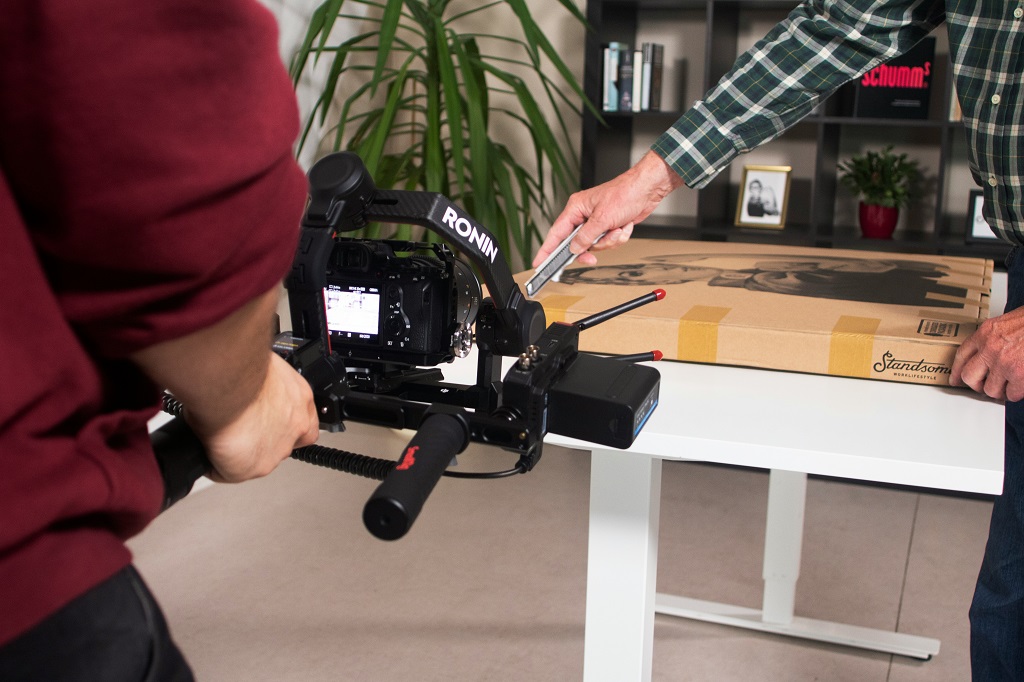User-generated content (UGC) has become an essential part of many successful campaigns. UGC includes any form of content—such as text, images, videos, and reviews—that is created by users rather than brands. This type of content is often shared on social media platforms, websites, and other digital spaces, making it a valuable asset for companies looking to connect with their audience. The authenticity of UGC makes it particularly effective, as consumers tend to trust the experiences and opinions of their peers more than traditional advertisements. By understanding what UGC is and how to use it effectively, brands can increase engagement, build trust, and boost their overall marketing efforts.

What is User-Generated Content?
User-generated content refers to any content created and shared by individuals rather than by the brand itself. This can include a wide range of content types, such as:
- Text: Blog posts, social media comments, testimonials, and reviews.
- Images: Photos taken by customers showcasing products, often shared on Instagram, Facebook, or Pinterest.
- Videos: Customer-created videos, unboxing clips, tutorials, or reviews shared on platforms like YouTube or TikTok.
- Audio: Podcasts or voice recordings where users discuss their experiences with a brand.
These types of content are powerful because they come from real users, reflecting their genuine experiences and opinions. For example, a customer posting a picture of their new shoes on Instagram and tagging the brand is an example of UGC. This content is valuable because it provides social proof, showing potential customers that real people are enjoying the products.
Benefits of User-Generated Content
User-generated content offers several benefits that make it a key component of a successful marketing strategy. Let’s discuss the main advantages.
Authenticity and Trust
One of the most significant benefits of UGC is its authenticity. People are more likely to trust content created by other users rather than content created by the brand. According to a study by Nielsen, 92% of consumers trust organic, user-generated content more than traditional advertising. When customers see real users sharing their experiences with a product, they are more likely to trust the brand and feel confident in their purchase decisions.
Increased Engagement
UGC encourages more interaction on social media platforms and websites. When users create content about a brand, it often leads to more likes, shares, and comments. This increased engagement can help build a stronger community around the brand. For instance, GoPro, a popular camera brand, often shares videos created by its users. These user-generated videos not only showcase the product in action but also encourage other users to create and share their own videos.
Cost-Effectiveness
Creating high-quality content can be expensive and time-consuming. UGC offers a cost-effective alternative because it relies on users to create the content. Brands can save on content creation costs while still providing fresh and engaging material to their audience. This makes UGC an attractive option, especially for small businesses or startups with limited marketing budgets.
SEO and Visibility
User-generated content can improve a brand’s visibility on search engines. When users share content that includes the brand’s name, products, or relevant keywords, it increases the chances of appearing in search results. Additionally, UGC can provide backlinks to the brand’s website, which can boost its search engine ranking. For example, a user sharing a blog post about their experience with a product can include a link to the brand’s website, helping to drive organic traffic.
Social Proof
UGC acts as social proof, showing potential customers that others are already using and enjoying the product. This can influence the decision-making process and encourage more people to buy. Seeing real users with positive experiences can have a powerful impact on potential customers, making them more likely to trust and engage with the brand.

How to Encourage User-Generated Content
Encouraging customers to create and share content can be challenging, but there are several strategies that brands can use to motivate their audience.
Incentives and Contests
One effective way to encourage UGC is by offering incentives or running contests. Brands can ask customers to share their experiences in exchange for a chance to win a prize or receive a discount. For example, a clothing brand could run a photo contest where participants share pictures of themselves wearing the brand’s products. These types of campaigns not only encourage content creation but also increase brand awareness and engagement.
Social Media Hashtags
Creating a branded hashtag is a simple yet effective way to encourage UGC. Brands can promote a unique hashtag and ask their audience to use it when sharing content related to the brand. This makes it easier for the brand to find and share user-generated content. For instance, Starbucks uses the hashtag #StarbucksMoment to encourage customers to share their coffee experiences. This not only helps in creating a sense of community but also provides the brand with a wealth of content to share.
Customer Engagement
Actively engaging with customers can also encourage UGC. Brands can ask questions, request feedback, or prompt customers to share their experiences. Simple actions like responding to comments, liking posts, or resharing user content can make customers feel valued, encouraging them to create more content in the future. For example, beauty brand Glossier often reshapes content from its customers, showing appreciation for their creativity and building a loyal community.
User-Friendly Platforms
Making it easy for users to share their content is important. Brands should choose platforms where their audience is most active and where sharing content is straightforward. For example, using social media platforms like Instagram, Facebook, or TikTok, where users can easily upload photos and videos, can be very effective. Additionally, brands can create dedicated sections on their websites where customers can submit reviews, photos, or videos.
Implementing a User-Generated Content Strategy
A successful UGC strategy requires careful planning and execution. Here are some key steps to consider:
- Setting Goals: The first step in implementing a UGC strategy is to set clear goals. Brands need to define what they want to achieve with user-generated content. Common goals include increasing brand awareness, boosting engagement, or driving sales. By setting specific goals, brands can better measure the success of their UGC campaigns and make adjustments as needed.
- Identifying the Right Platforms: Choosing the right platforms is crucial for a successful UGC strategy. Brands need to be present where their audience is most active. For some, this might be Instagram or TikTok; for others, it could be YouTube or a niche online community. Understanding where users prefer to share content will help brands reach their target audience more effectively.
- Content Moderation: While UGC is authentic, it’s important to ensure that the content aligns with the brand’s values and messaging. Having a moderation process in place allows brands to review and approve content before it is shared. This helps in maintaining quality and relevance while avoiding any potential issues. For example, brands can use content moderation tools or hire community managers to monitor user-generated content.
- Legal Considerations: Using UGC requires an understanding of legal aspects, such as rights and permissions. Brands must have clear guidelines on how user content will be used and ensure they have permission to share or promote it. This not only protects the brand but also builds trust with the users, showing that their content is respected. Brands can use disclaimers or terms and conditions to outline how user content will be used.
Best Practices for Using User-Generated Content
To maximize the impact of UGC, must implement thoughtful strategies that encourage, curate, and amplify this content effectively. Here are some essential best practices to follow.
Highlighting the Creators
Giving credit to the users who create content is important. Brands should always tag or mention the original creator when sharing UGC. This recognition not only shows appreciation but also encourages more users to create and share content. For example, Airbnb often features photos from guests on its social media channels, giving credit to the photographers and encouraging others to share their experiences.
Diverse Content Types
Using different types of UGC keeps the audience engaged. Brands can share photos, videos, reviews, and even user stories. By mixing different content types, brands can appeal to a broader audience and keep their marketing efforts fresh and interesting. For instance, fitness brands can share workout videos, success stories, and product reviews to engage with different segments of their audience.
Consistency
Regularly sharing UGC is key to maintaining engagement. Brands should have a consistent plan for sharing user-generated content. Whether it’s once a day or a few times a week, consistency helps keep the brand in the minds of consumers and encourages ongoing participation. A content calendar can help brands plan and schedule UGC posts, ensuring a steady flow of content.
Monitoring and Measuring
To understand the impact of UGC, brands need to track its performance. Tools and metrics can help measure how UGC is affecting engagement, reach, and conversions. By analyzing these metrics, brands can adjust their strategies to improve results and better meet their goals. For example, brands can use social media analytics tools to track the performance of UGC posts, monitor engagement rates, and identify top-performing content.
Case Studies of Successful UGC Campaigns
Several brands have successfully leveraged UGC to boost their marketing efforts. Here are a few examples:
- Coca-Cola’s “Share a Coke” Campaign: This campaign encouraged customers to find bottles with their names on them and share photos using the branded hashtag #ShareACoke. This simple yet effective idea generated a huge amount of user content, significantly increasing engagement and brand visibility. The campaign was successful because it made customers feel special and encouraged them to share their experiences with friends and family.
- GoPro: The action camera company has built its entire brand around UGC. GoPro frequently shares videos created by its users, showcasing the camera’s capabilities in real-life situations. This not only provides free content for GoPro but also encourages users to create and share their own videos, fostering a sense of community and excitement around the brand.
- Starbucks’ Red Cup Contest: Every holiday season, Starbucks launches its Red Cup Contest, asking customers to share photos of their holiday-themed red cups. Participants use the hashtag #RedCupContest to enter, and Starbucks features some of the best entries on its social media channels. This campaign engages customers, builds anticipation for the holiday season, and provides Starbucks with a wealth of festive content to share.
Wrapping Up
User-generated content is a powerful tool for brands looking to connect with their audience in an authentic and engaging way. By encouraging and leveraging UGC, brands can build trust, increase engagement, and create a sense of community. To succeed, brands must set clear goals, choose the right platforms, and consistently share and credit user content. With careful planning and execution, UGC can be a cost-effective and impactful component of any marketing strategy, helping brands to reach new heights of success.
If you’re looking to integrate UGC into your marketing efforts but aren’t sure where to start, our team is here to help. Contact us today and let’s discuss how we can help you leverage the power of UGC to drive your marketing success.